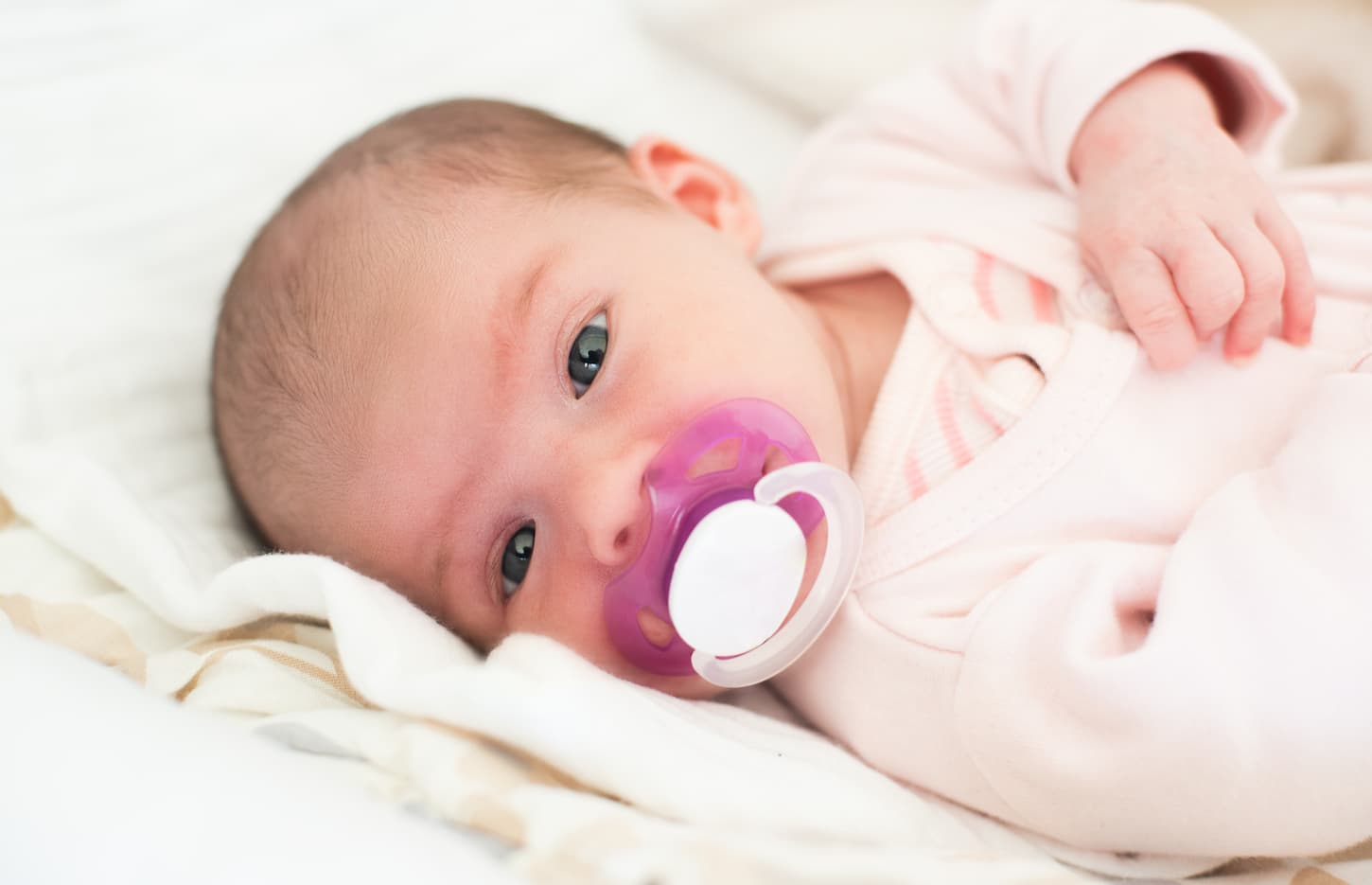Parenting is one of the best things you can ever experience. With the joy of parenthood comes struggles and dealing with your child’s crying is only one of the challenges of being a parent. When your baby cries too much, you can feel like pulling your hair out in frustration. It can seem as if babies have united to create the motto “If we’re not sleeping, neither are you!” Especially when you wonder how long it takes a baby to cry themselves to sleep.
Babies usually only cry for about one to two hours before they fall asleep, and some won’t even cry for that long. Pediatricians, sleep experts, and thousands of parents I’ve talked to have found and agree that 1-2 hours is the average amount of time it takes a baby to cry themselves to sleep.
We understand how tough this can be to deal with, it can sometimes seem like forever before your child stops crying – but try not to worry. Let’s talk about how long it takes a baby to cry themselves to sleep – and all the related questions.

Do Babies Eventually Cry Themselves to Sleep?
Not all babies will eventually cry themselves to sleep, as all babies are different. On average, though, most babies can cry themselves to sleep within 1-2 hours of being put to bed.
There are different types of babies: some can’t fall asleep without crying, some wake up in the middle of the night to cry then they will fall back to sleep. So yeah, some babies can eventually cry themselves to sleep. As we’ve mentioned earlier, babies can cry for about one to two hours, but some don’t last that long. They can tire themselves out and fall back to sleep after crying for 5 to10 minutes.
That being said, there are some babies that can’t handle cry-it-out. These babies shouldn’t be allowed to cry for more than the 1-2 hour window. If your baby still cannot fall asleep after crying for longer than this, the key is to create an environment where it is easier for them to fall asleep.
Here are some tips that you can use to help your baby:
Tip #1: Create a routine (with lullabies)
Singing a lullaby while rocking your baby is one of the approaches you can take. Singing can help calm your baby down, love music, and become more familiar with your voice. If you repeat this every time your baby goes to bed, they will surely find it easier to get to sleep.
Tip #2: Read books to your baby
When your baby is already relatively calm, you can read to them. It will not only lull them to sleep but can help calm them down and instill a love of stories into them.
Tip #3: Give your baby appropriate stuffed toys and comforts
Who doesn’t like stuffed toys? Babies love them so much, these kinds of toys bring so much comfort to your baby, and giving your baby one to cuddle can help your baby fall asleep better.
Tip #4: Feed hungry babies
Your baby could be hungry. They could eventually stop crying after you feed them. Make sure to burp them before bringing them back to their crib, though, as this might create issues for you later if you forget.
Tip #5: Massage your baby
Giving your baby a soft massage can help them relax and sleep better.
Tip #6: Give your baby a warm bath before bed
If all the tips above don’t work, you can give your baby a warm bath to make them feel more comfortable and ready for sleep.
Tip #7: Adjust the lights
It’s hard to sleep with bright lights or visible daylight. Dim down the lights, close the blackout curtains, and then put your baby into her crib. By doing this, you can teach your baby how to fall asleep on their own.

How Long Should You Let Your Baby Cry it Out?
On average, most babies will cry themselves to sleep within 1-2 hours of being put to bed on the first attempt. The amount of time spent crying at bedtime will decrease to an average of less than 5-15 minutes within 5 days.
One of the most challenging parts of being a parent is when your baby cries nonstop, and you have already done everything to make them stop, but nothing is working. It makes you wonder if there is something wrong with what you are doing. But no, it’s all normal, so don’t worry – take a deep breath.
When you have already done everything you can to help your baby fall asleep and they still can’t, the best approach is just to let them be. It’s not wrong to leave them to cry for a while.
In fact, according to Richard Ferber’s Cry it out (CIO) method: letting your baby cry for a bit can help your baby learn how to soothe themselves.
You can approach this method through increments; start by letting your baby cry for 5 minutes before you offer help, then the next day, you can adjust it to 10 minutes.
Make sure to kiss your baby every time you leave them though, so they know they are loved! Then increase the time again and again until your baby can adjust to falling asleep on their own.
Once they get used to it, their cries will get less loud, take less time, and be less awful each time.
However, take note that you can only do this method when your baby is already six months old or older. Younger babies still need attention, so they are expected to cry because they can’t voice what they need.
But, when they turn six months old, they can already communicate much better than before and know how to use their cries to get your attention.
This method can help your baby in so many ways. Asides from them learning how to soothe themselves, crying can also exercise your baby’s lungs. So yes, it involves a lot of crying. It will be heartbreaking at first, but it will all be worth it in the end.
The CIO method is just one option; if your baby still doesn’t stop crying then your baby may have colic. When your baby has colic, his cries are much longer, and it can begin for no apparent reason.
Please note: If you are concerned that your child may be suffering from colic, you should take your baby to a health care professional or pediatrician.
What Happens if you let a Baby Cry for Too Long?
Babies who cry as part of a sleep training regime in studies have been found to have no long-lasting effects, either ill or beneficial.
Researchers from the Flinders University in Adelaide, Australia, conducted a research study to test the effects of different sleep training methods on 43 sets of parents who have babies. The CIO was one of the methods that the researchers used to test the babies.
As we’ve mentioned before, the CIO method is when you let your baby cry for some time so that they can learn how to soothe themselves.
The researchers confirmed that the CIO method is effective and that they saw no side effects like an increase in stress hormones, attachment, or ongoing emotional issues with babies.

But what happens if your baby cries longer than the set period of time?
Here are the side effects that you might want to know.
Keep in mind that letting your baby cry for 1-2 hours doesn’t usually cause these kinds of issues. These types of issues are more usually associated with hours upon hours of prolonged crying for days, weeks, and months on end.
Side Effect #1: Behavior may be affected
Babies who experience excessive crying have a higher chance of having attention deficit hyperactivity disorder, which is more commonly known as ADHD. This is a generalization that’s still being studied.
Side Effect #2: Stress tolerance may be affected
According to Dr. Bruce Perry’s research, when your baby is repeatedly left alone to cry, it can cause chronic stress. Chronic stress can overstimulate your baby’s brain stem (the part where the brain controls adrenaline), resulting in a change in your child’s behavior. For example, it can increase their impulsivity, aggression, and violence.
Side Effect #3: Emotional disregulation
Intense crying, neglect, and stressful events, according to Dr. Allan Schore of UCLA’s School of medicine, can cause the stress hormone cortisol to increase in your baby, preventing the portions of the brain that feel emotional control from developing properly.
When the portions of the brain in charge of emotional control are not simulated in infancy, your child may develop violent and emotionally unattached behavior.
Side Effect #4: Changes to the brain’s structure and function
Intense crying and stress can alter the brain’s neurotransmitter systems, according to researchers from Yale University and Harvard Medical school. The alteration can cause structural and functional changes in the brain, similar to adults with depression.

How Long Does It Take for a Baby to Self-Soothe to Sleep?
Babies have different time frames for self-soothing to sleep. Some take 30 minutes while some take 1 – 2 hours to soothe themselves to sleep.
Babies have ways to self-soothe themselves based on their emotional development. For example, some babies cry, some talk to their stuffed toys and some chew their pacifiers to sleep. Every baby is different and has its own way of managing its emotional responses. As early as three months old, you can already teach your baby how to soothe themselves.
Even if babies have already developed their soothing techniques, they can still experience distress if left alone to cry for an extended amount of time.
Teaching your baby how to self-soothe is an essential life skill, it can teach your baby how to calm themselves down in different situations. In addition, when they turn six months old, there is a higher chance that they are now more capable of sleeping for eight or more hours without interruption.
Key Takeaways on Letting Babies Cry
Remember to also take care of yourself. Letting your baby cry is exhausting for both them and you. There can be times when looking after your baby feels like too much and you want to give up.
Relax, put down your baby, and take a moment for yourself.
When you relax, it is much easier to console and take care of your baby. Asking for some support with raising your child from your partner, friends, or family is also a great idea. You are doing so well to look after your baby as best as you can – but you need to look after it sometimes, too!
So take a deep breath – and then make sure you read this article next, because it’ll give you a good laugh while reassuring you that you’re doing your best. Is It Normal for Babies to Sleep in Weird Positions? Seriously. Go give it a read.
Resources
Learning about parenting or sleep training techniques is important to learn from various reputable sources. These are the sources used in this article and our research to be more informed as parents.
- “Is My Baby Crying Too Much?” UNC Health Talk, 27 June 2018, healthtalk.unchealthcare.org/is-my-baby-crying-too-much/.
- Marcin, Ashley. “Cry It Out Method: Age, How Long Is Too Long, Possible Harm.” Healthline Parenthood, 24 June 2020, www.healthline.com/health/baby/cry-it-out-method#what-it-is.
- McCarthy, Claire. “New Study Says That It’s Okay to Let Babies Cry at Night.” Harvard Health Publishing, Harvard Medical School, 31 May 2016, www.health.harvard.edu/blog/new-study-says-okay-let-babies-cry-night-201605319774.
- Reddy, Sumathi. “Can You Sleep Train Your Baby at 2 Months?” The Wall Street Journal, Dow Jones & Company, 2 May 2016, www.wsj.com/articles/can-you-sleep-train-your-baby-at-2-months-1462209999#:~:text=Most%20pediatricians%20recommend%204%20to,as%20little%20as%20three%20days.
- “Responding to Your Baby’s Cries.” HealthyChildren.org, American Academy of Pediatrics, 21 Apr. 2021, www.healthychildren.org/English/ages-stages/baby/crying-colic/Pages/Responding-to-Your-Babys-Cries.aspx.
- Sears, Dr. Bill. “Effects of Excessive Crying in Babies.” Ask Dr Sears, 23 Sept. 2020, www.askdrsears.com/topics/health-concerns/fussy-baby/science-excessive-crying-harmful/.
